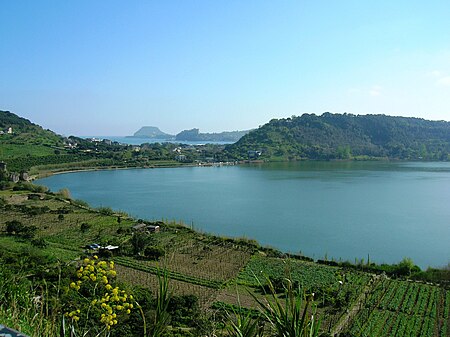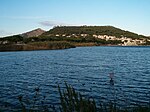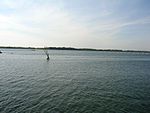Lake Avernus
Archaeological sites in CampaniaCampanian volcanic arcLakes of CampaniaPhlegraean FieldsPozzuoli ... and 2 more
Volcanic crater lakesVolcanoes of Italy

Lake Avernus (Italian: Lago d'Averno) is a volcanic crater lake located in the Avernus crater in the Campania region of southern Italy, around 4 kilometres (2+1⁄2 miles) west of Pozzuoli. It is near the volcanic field known as the Phlegraean Fields (Campi Flegrei) and comprises part of the wider Campanian volcanic arc. The lake is roughly circular, measuring two kilometres (1+1⁄4 mi) in circumference and 60 metres (200 ft) deep.
Excerpt from the Wikipedia article Lake Avernus (License: CC BY-SA 3.0, Authors, Images).Lake Avernus
Via Italia,
Geographical coordinates (GPS) Address Nearby Places Show on map
Geographical coordinates (GPS)
| Latitude | Longitude |
|---|---|
| N 40.838333333333 ° | E 14.075 ° |
Address
Via Italia
Via Italia
80072 , Toiano
Campania, Italy
Open on Google Maps









